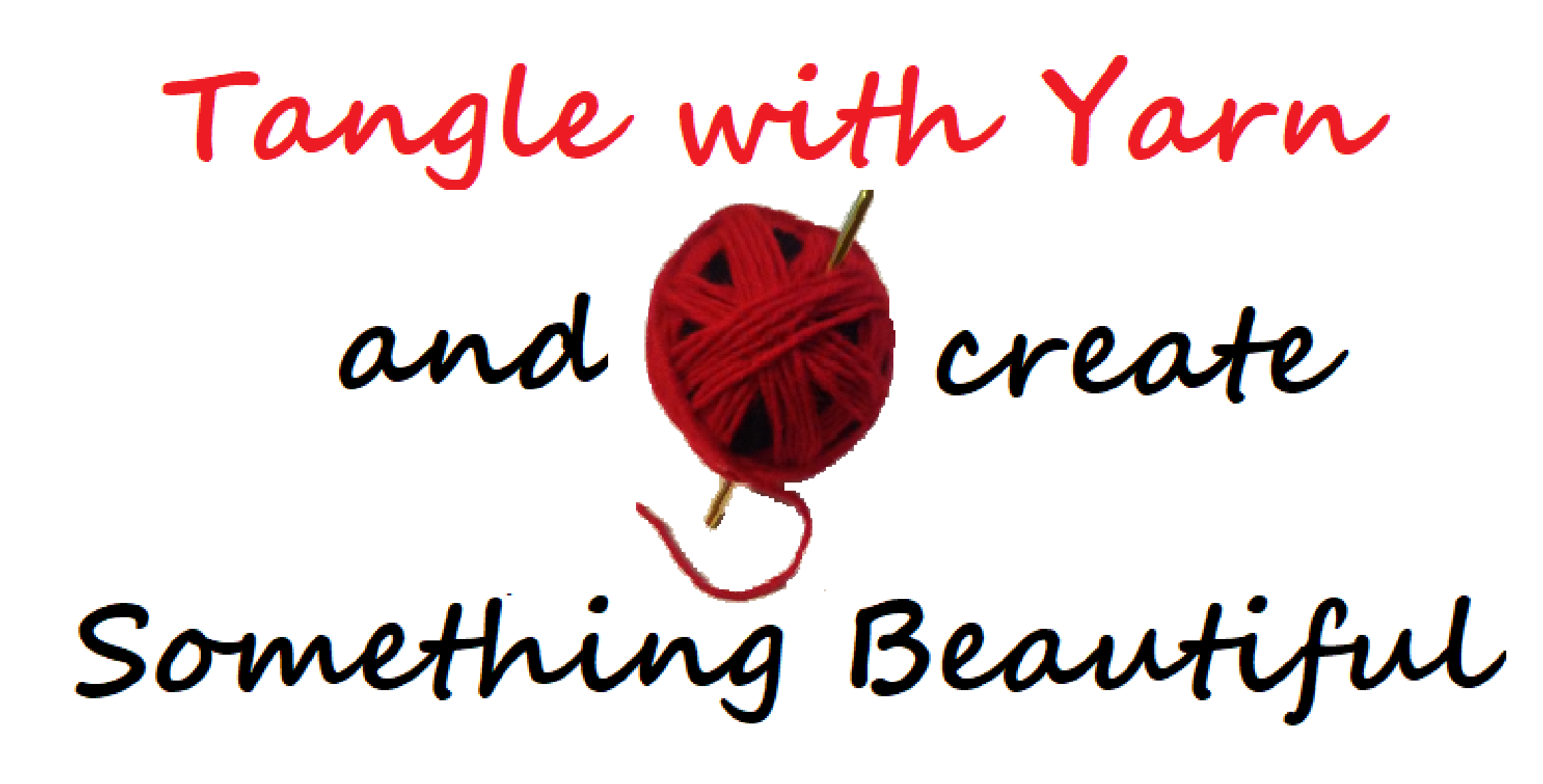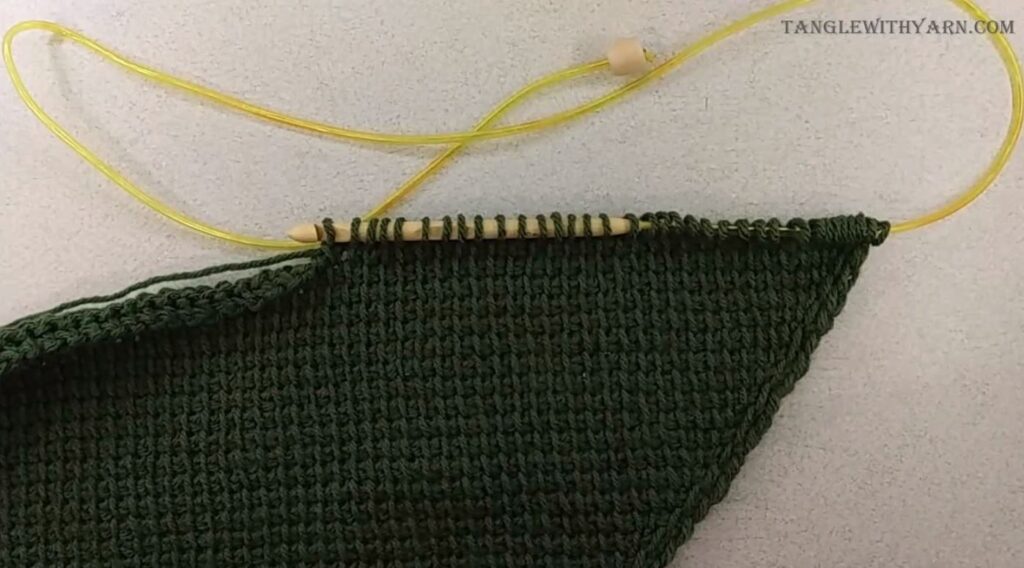In this video tutorial I will show you how to do the Tunisian Simple Stitch. You will see this stitch abbreviated as TSS in Tunisian Crochet Patterns.
More Tunisian Crochet Tutorials Coming Soon
Want to learn how to do Tunisian crochet? I am currently working on creating Tunisian crochet tutorials. I will also have tutorials to make things like dischcloths, scarfs, fingerless gloves and many more as I create ideas and inspiration using Tunisian crochet.
Tunisian crochet uses an elongated hook that looks like a combination of a crochet hook and a knitting needle. On one end of the Tunisian crochet hook you will see a hook just like one that you would find on a standard crochet hook and on the other end you will find a stopper just like you would find on a knitting needle.
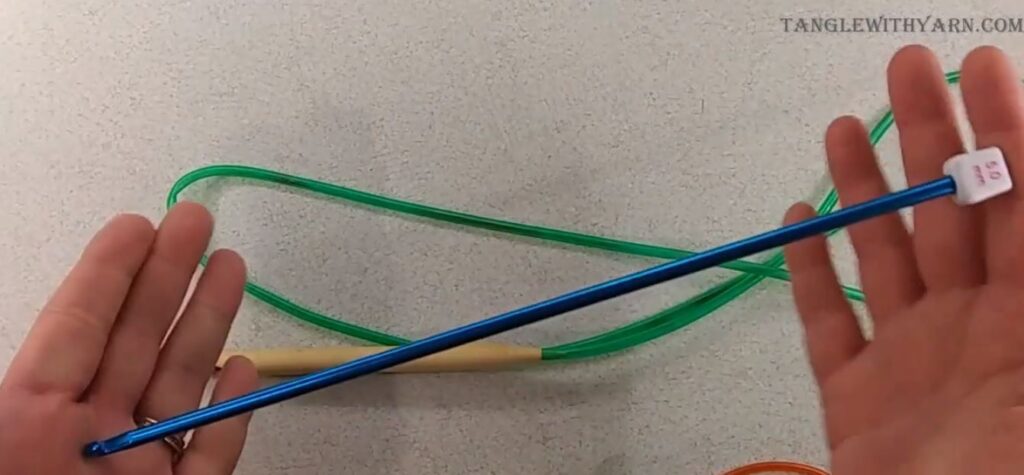
The first step to starting your Tunisian crochet project would be to start out just like you would start a standard crochet project in most cases. You would start with chains. The reason why I say that you would start out the same way with chains in most cases, is due to the fact that you can cast on your stitches much like knitting instead of starting with chains to begin your project. Instead of starting with chain stitches, you can also cast on using the same long tail cast on method that is used to cast on to a knitting needle.
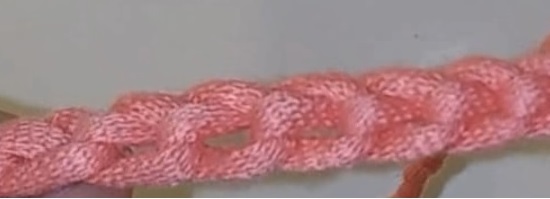
If you use the standard method of creating chains, then you would then insert your hook into the chains and pull up loops and leave these loops on the hook until you have pulled up a loop for each chain working from right to left. In most cases you will want to work into the back bumps of the chains, when you pull up the loops. This then completes the process of casting on. You can also use the long tail cast on instead of using this method of creating chains and pulling up loops.

You would then work the loops off the hook to create your first row, which will be the foundation row. This process of working the loops off after casting on is called the return pass. You will work this return pass without turning the work. You will work the stitches off from left to right when you work a return pass.
You will continue to work the project without turning your hook. The crochet project is worked back and forth from right to left, then left to right. When you work from right to left, this is called the forward pass, when you collect your loops. Then when you work left to right to work off the loops, this is called the return pass. It takes a forward pass and a return pass to complete one row in Tunisian crochet.

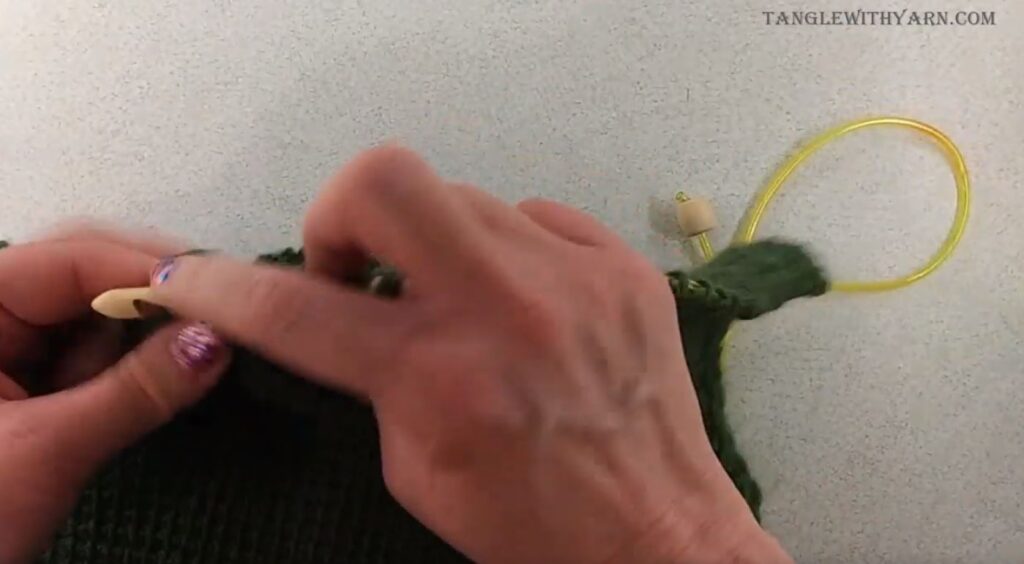
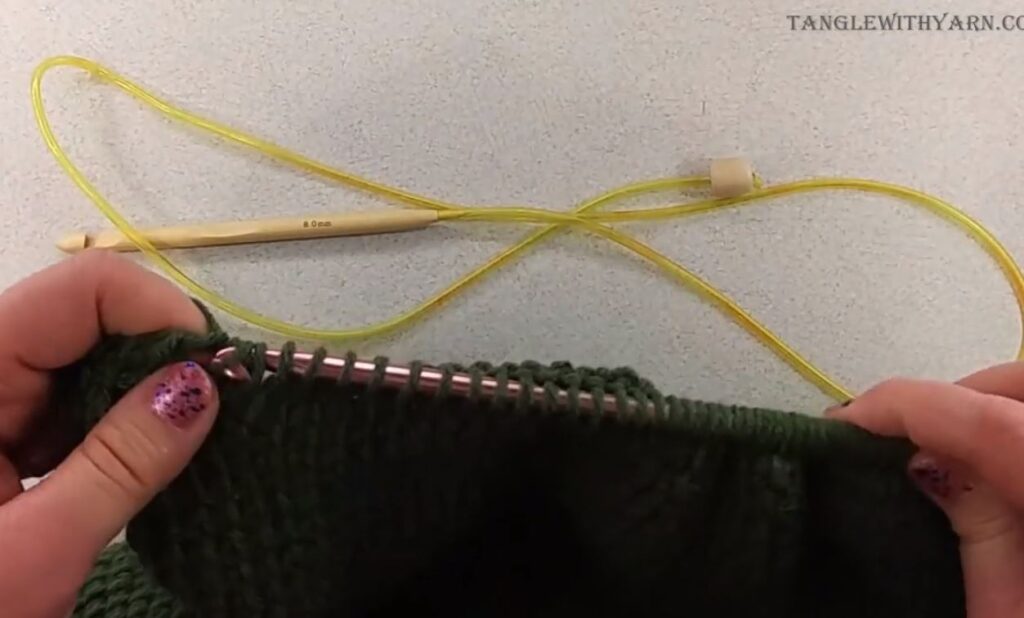
Tunisian crochet can also be worked in the round by using a double ended crochet hook. When you use a double ended crochet hook to work in the round you would use two balls or skeins of yarn. You will complete the forward pass with one ball or skein of yarn, and then you would complete the return pass with the second ball or skein of yarn. This looks really nice, when each ball or skein of yarn are different colors. There is also a double ended crochet hook, that has a cable in the middle. The double ended crochet hook with the cable that attaches the two hooks together looks like a set of circular knitting needles with a cable that connects the two knitting needles together, except, instead of having the knitting needles on the ends of the cable, you would have a crochet hook on each end of the cable.

Tunisian crochet creates a dense fabric, that is less elastic than regular crocheted items. The item that you create with Tunisian crochet will have more stretch vertically, than it does horizontally. You will also notice that Tunisian crochet tends to curl. Some stitches have less curl than others. You will usually, always want to block your project when you complete it. You can block the fabric in the same way as you would with standard crochet projects.
The Tunisian knit stitch is much thicker than the knit stitch that is created using knitting needles. The Tunisian purl stitch does not curl as much as the Tunisian knit stitch. You can use the stitches that do not curl as much as others as an advantage when you design your crochet project. For example; you can start your project with a few rows of the purl stitch then continue with rows of the knit stitch and end with rows of purl stitches. You can also start each row and end each row with purl stitches as well as starting and ending rows with the purl stitch and this would create a nice border for a project that you want to use the knit stitch. This will help the ends from curling, since the purl stitch curls less than the knit stitch.
When you look at a yarn label, you will see the recommended crochet hook size to use with the yarn. You will want to go up a size or two for a Tunisian crochet hook, than the recommended size that you see on the yarn label.
I have included a link for the Tunisian crochet hooks, that I purchased from Amazon. Thank you for visiting my website. As an Amazon Associate I earn from qualifying purchases. Please note : when you use the links below and on this page, I will earn a percentage for commission of the sale. The good news is that this in no way will change the price of the item from Amazon. Here is a link for the Tunisian crochet hooks from Amazon: https://amzn.to/2RD2eax
